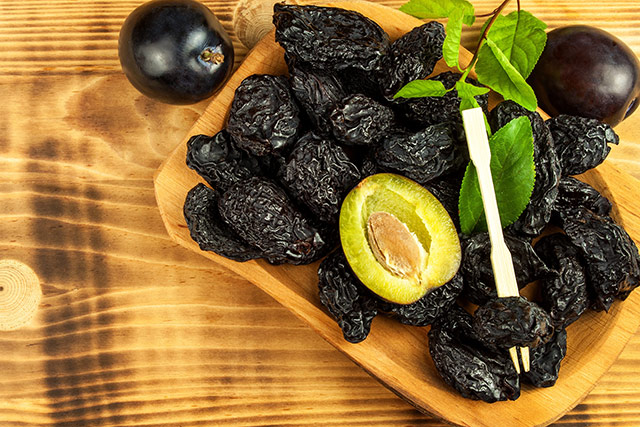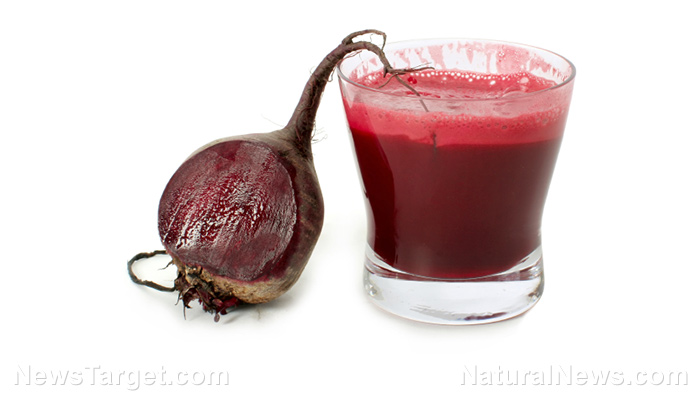Yam flour can be a great substitute for wheat flour in a variety of food products
06/16/2020 / By Evangelyn Rodriguez

Yam is a staple crop grown in Asia, the Caribbean, South Pacific and Africa. In some parts of the world, particularly in the tropical and subtropical regions of Africa, yam serves as the main source of calories in people’s diets.
According to researchers at North Dakota State University, increased utilization of local staple crops, such as sorghum, sweet potato and yam, can benefit farmers and local economies. These crops can be used for the production of composite flours and other unique food products, such as gluten-free cakes and pastries.
To support the development of such products, the researchers decided to study the functional characteristics of different yam flours. Specifically, they compared the physical and chemical properties of fermented (brown) yam flour and unfermented (white) yam flour with those of refined wheat flour. They reported their findings in an article published in the Journal of Food Processing and Preservation.
Yam flour proved to be more nutritious than refined wheat flour
Based on multiple analyses, the researchers found that compared with refined wheat flour — which has been stripped of most of its nutrient content due to processing — yam flours contain less protein (3.3 to 5.9 percent), arabinoxylans (0.93 to 1.40 percent), the antinutrient phytic acid (0.17 to 0.53 mg/g), phenolic acids (0.57 to 2.28 mg ferulic acid equivalent [FAE]/g), amylose (17.3 to 22.6 percent) and fat (0.2 to 0.4 percent). However, yam flours contain higher amounts of potassium (119 to 845 mg/100 g), ash (1.70 to 2.21 percent), total starch (73.8 to 74.2 percent) and dietary fiber (6.8 to 7.0 percent).
The researchers also reported that while all the samples exhibited high (>90) estimated glycemic index (eGI) values, brown yam flour and white yam flour had significantly lower eGI values than refined wheat flour. This means that both yam flours are less likely to cause blood sugar spikes after consumption than refined wheat flour. Thermal studies, meanwhile, showed that yam flours require more energy for gelatinization, suggesting that the former will take more time to get cooked than refined wheat flour.
On the other hand, brown yam flour is able to swell and retrograde more rapidly than refined wheat flour, meaning it can absorb more liquid than the latter. It also has a significantly higher gel firmness than even white yam flour, which makes it more suitable for certain culinary applications, such as in the making of bread. The researchers thus concluded that all three flours exhibit different characteristics that can impact their functional and nutritional properties.
The health benefits of yam
Yam is a type of tuber vegetable that’s often mistaken for sweet potato. But unlike the latter, the former tastes less sweet and is starchier. Depending on its maturity, the color of yam flesh can range from white and yellow (young) to purple or pink (mature).
A superfood in its own right, yam is rich in essential nutrients. A one-cup (136 g) serving of freshly baked yams can provide the following: (h/t to Healthline.com)
- 37 g of carbohydrates
- 2 g of protein
- 5 g of fiber
- 18 percent of the Daily Value (DV) for vitamin C
- 9 percent of the DV for vitamin B5 (pantothenic acid)
- 22 percent of the DV for manganese
- 6 percent of the DV for magnesium
- 19 percent of the DV for potassium
- 11 percent of the DV for thiamine
- 23 percent of the DV for copper
- 6 percent of the DV for folate
Here are some of the health benefits of eating yams: (Related: Compounds in yam have vasodilating and antioxidant properties.)
- Promotes neuron growth and boosts brain function
- Improves estrogen levels, which can relieve menopausal symptoms
- A rich source of antioxidants
- Inhibits tumor growth
- Helps reduce inflammation
- May help improve blood sugar levels
- Promotes good digestion
- Reduces appetite and promotes weight loss
- May protect against drug-resistant bacteria
- Helps lower blood cholesterol levels
Yams are versatile and nutritious, and they make perfect additions to a healthy diet. Yams are also great for people with diabetes and weight watchers because of their high fiber content. Get to know more about yams and similarly nutritious foods at Superfoods.news.
Sources include:
Submit a correction >>
Tagged Under:
#nutrition, blood sugar, diabetes, fermented yam flour, food production, food science, functional food, gluten free, glycemic index, nutrient content, research, unfermented yam flour, wheat flour, yam
This article may contain statements that reflect the opinion of the author
RECENT NEWS & ARTICLES
COPYRIGHT © 2017 NATURAL CURES NEWS





















